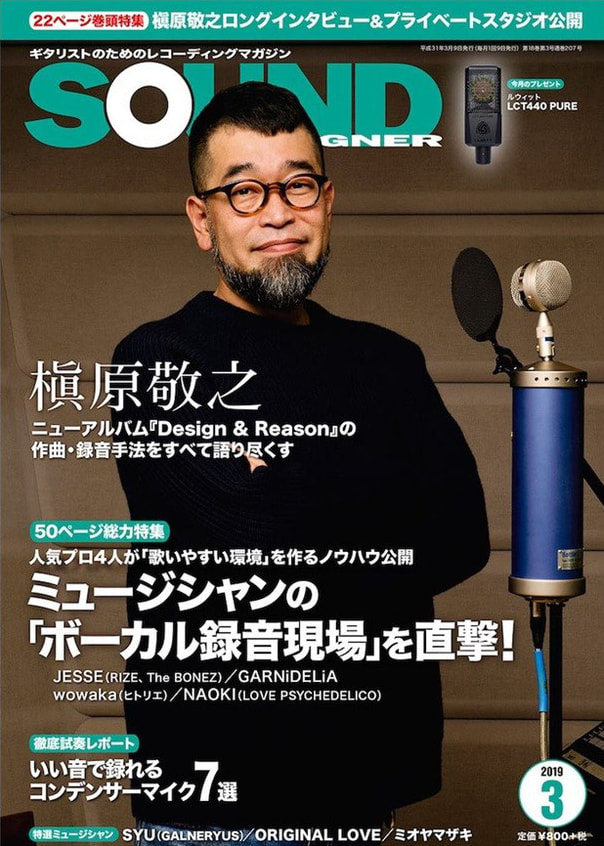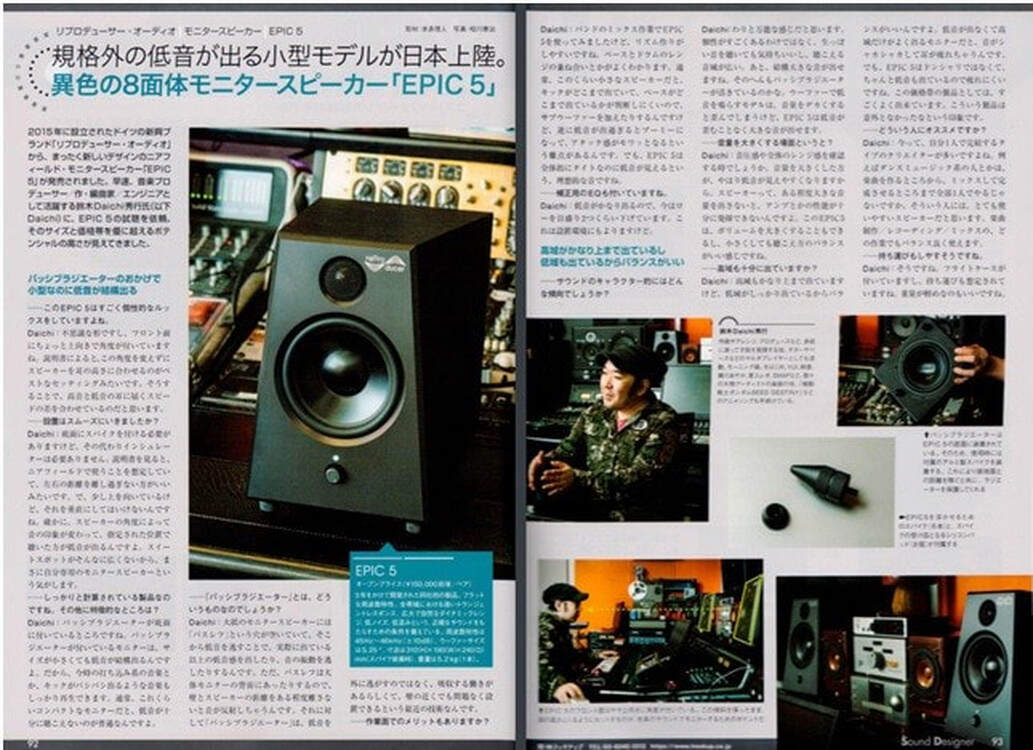Hideyuki Suzuki (Daichi):
Thoughts on reProducer Audio Labs Epic 5
Sound Designer Magazine – Japan
March 2019
March 2019
|
Unexpected sound quality from compact size with exotic 8-sided outer design monitor landed in Japan. Founded in 2015, the new design of Nearfield monitor speaker Epic 5 was released by emerging German brand reProducer Audio Labs.
We asked Hideyuki Suzuki (Daichi), a music producer, songwriter, and engineer, to listen to the Epic 5. As a result, we found a high possibility of exceeding the size and price range. It's small, but it's enough low-end thanks to the passive radiator.... |




